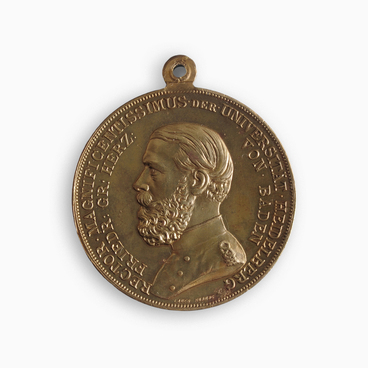The history of coffee making in Europe dates back several centuries. In the 19th century, engineers were actively engaged in developing not only steam engines, but also useful appliances, such as coffee makers. The increasing popularity of coffee led to the development of a variety of devices for coffee making.
The museum’s exhibition features a vacuum-type coffee brewer that was invented by the Scottish engineer Robert Napier in 1840. The coffee maker consists of three main components: a base and two working chambers. The base is made of porcelain and has a rectangular shape with ribbed sides and two circular indentations on the surface. In the center of the base, there is a metal rod that supports both chambers. The first chamber is cylindrical and made of porcelain with a faceted design and a narrow conical spout. It has a circular relief hole on one side, small “ears” in the form of waterdrops for attaching to the rod, and a metal spout at the bottom. The second chamber is made of transparent glass and has a rounded conical shape with a thickening in the middle of the leg. It has a smooth circular base and a rounded slotted lid. Both chambers are connected by a metal curved tube with a round metal strainer at the end.
This is a vacuum coffee brewer. The ceramic container is placed on top of a burner and heated, causing an increase in pressure. This pressure forces water through the tube and into the glass container, where it is mixed with ground coffee beans. After this, the burner is switched off, creating a low pressure in the container that causes the brewed coffee to flow back into the porcelain chamber. Finally, the drink is dispensed into cups through the spout.
The porcelain vessel is decorated with a bouquet
and rose flowers, with green and gray leaves on thin branches. Scattered on the
vessel’s walls are branches with pink and blue flowers, which feature elongated
yellow-green leaves. The metal rod is complemented by leaves and curls. In the
center, the spout is made in the form of a dragon head. Both the transparent
vessel and its decorative elements suggest that the coffee maker played a
significant role in the household: in addition to coffee making, it also made
the dining experience more special. The process of coffee preparation moved
from a utilitarian space, such as the kitchen, to a more central location in
the house, closer to the owners and their guests, becoming part of a fun show.




